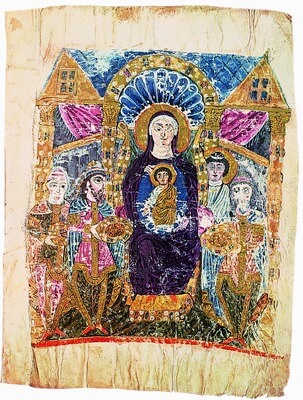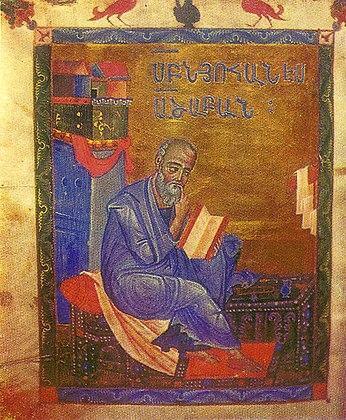Prehistoric Armenian art, dating back to the Urartian culture, has more than 4-5 millenniums of history. It has always been an integral part of Armenian identity represented in forms of sculpture, painting, mosaic, and curving.

The painting was one of the earliest and most widespread forms of Armenian art. Besides being a very significant art form, painting served for informative function as the history of Armenian painting is exclusively represented in decorative manuscript and miniatures. Therefore, miniatures play an incredibly significant role not only as masterpieces of Armenian art but also as the sources of history.
Miniatures are one of the most prevalent art forms of Medieval Armenia. Miniatures- the prototypes of paintings, date back to the Golden Age of Armenian arts and literature (5th century).
Armenian manuscript production was carried on exclusively by monks or priests employed in churches or monasteries. Therefore, the miniatures also had only one common topic until the medieval period- the life of Christ. Armenian miniature started flourishing in different regions of Armenia since the thirteenth century by giving birth to as talented painters as Toros Roslin, Sargis Pitsak, and Momik.

Fortunately, more than 30000 manuscripts are preserved dating from the ninth to the nineteenth century with tens of thousands miniatures depicting historical events, holly scenes, and people’s lifestyle. Thus, historians make some vivid depictions about the history and Armenian lifestyle due to the ancient miniatures.
Indeed, canvas painting is also famous in Armenia; however, it dates from the eighteenth century and later. Some of the extraordinary representatives of Armenian Art are Hakob Hovnatanian, Hovhannes Ayvazovsky, Vardges Sureniants, Panos Terlemezian, Gevorg Bashinjaghian, Martiros Sarian, Hakob Kojoyan, Edvard Isabekyan, Bartugh Vardanian, Ervand Kochar, and Minas Avetisyan. They created art in the styles of Realism, Romanticism, Impressionism, post-Impressionism, Abstract Expressionism, as well as Modernism.
Nowadays, also Armenian Art does not cease to develop, and Armenian artists are still famous worldwide. Their artworks of graphic art, collages, modern and abstract art has always been valued and appreciated both in Armenian and abroad. The style, method (oil, watercolor, acrylic, airbrush, digital, etc.), techniques are different. However, Armenian art differentiates from others due to its emotional impact, unique colors, and cultural history.

Autumn, by Viken Bertizian. Painting: Canvas / Oil Paint. Abstraction with red spot, by Taira. Painting: Canvas / Oil Paint. 
Fourth dimension, by Hovhannes Aghekyan. Painting: Canvas / Oil Paint. 
Still life with pomegranates, by Artur Isayan
Contemporary artists, like the ones represented on Armenian Art platform, are vivid representatives of ever flourishing Armenian contemporary art. Through their existence and work they prove, that contemporary art is not dead and is not even going to.



Leave A Comment
You must be logged in to post a comment.